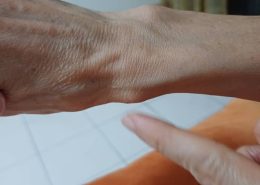My RBC count is 5.11 in my CP blood test report. what is this and why its mark as red. is it dangerous sign. ?
The concept of the "best" food for weight loss is somewhat misleading, as weight management is more effectively approached through a balanced dietary pattern rather than sole reliance on specific foods. However, integrating certain types of foods into one's diet can support weight loss due to theirRead more
The concept of the “best” food for weight loss is somewhat misleading, as weight management is more effectively approached through a balanced dietary pattern rather than sole reliance on specific foods. However, integrating certain types of foods into one’s diet can support weight loss due to their nutritional profiles and impacts on satiety and metabolism. Here are categories of foods often recommended for this purpose:
1. High-Fiber Foods: Foods rich in fiber can promote feelings of fullness and reduce overall calorie intake. These include:
– Whole grains: brown rice, oats, quinoa, barley.
– Legumes: lentils, chickpeas, black beans.
– Fruits: apples, pears, berries, bananas, citrus fruits.
– Vegetables: broccoli, carrots, Brussels sprouts, spinach, kale.
2. Lean Proteins: Adequate protein intake supports muscle maintenance and enhances satiety.
– Poultry: skinless chicken and turkey.
– Fish and seafood: salmon, sardines, tuna, shrimp.
– Plant-based proteins: tofu, tempeh, edamame.
– Eggs: a versatile and nutrient-dense option.
– Low-fat dairy: Greek yogurt, cottage cheese.
3. Healthy Fats: Fats can also contribute to satiety and provide essential nutrients, though they should be consumed in moderation.
– Avocados: rich in monounsaturated fats.
– Nuts and seeds: almonds, walnuts, chia seeds, flaxseeds.
– Olive oil: preferred for cooking and dressing salads.
4. Non-Starchy Vegetables: Low in calories but high in volume, these can fill the plate without adding excess calories.
– Leafy greens: lettuce, arugula, Swiss chard.
– Cruciferous vegetables: cauliflower, cabbage, bok choy.
– Others: bell peppers, zucchini, asparagus.
5. Calorie-Free Beverages: Hydration without added calories can help manage hunger cues.
– Water: essential for all bodily functions.
– Herbal teas and black coffee: provide flavor without calories.
– Infused water: adds variety with natural flavors from fruits and herbs.
Incorporating these foods into a broader plan that emphasizes portion control, balanced macronutrient distribution, and mindful eating practices will likely yield the most sustainable and healthy weight loss. Additionally, any dietary changes should be complemented by regular physical activity and adaptations to one’s lifestyle, such as stress management and sufficient sleep, to enhance the weight loss process and overall wellness.
Before making significant dietary changes, it is advisable to consult with a healthcare provider or registered dietitian to tailor a plan that considers individual health conditions, nutritional needs, and weight loss goals.
See less


Hello, this is something a lot of people ask when reviewing their blood test results. Firstly, let me explain what RBC count is. Your RBC count refers to the number of red blood cells in a given volume of blood, typically in one microliter (µL). These cells are responsible for carrying oxygen througRead more
Hello, this is something a lot of people ask when reviewing their blood test results.
Firstly, let me explain what RBC count is. Your RBC count refers to the number of red blood cells in a given volume of blood, typically in one microliter (µL). These cells are responsible for carrying oxygen throughout the body, so they’re quite essential for your overall health.
For context, the normal range is usually around 4.7-6.1 million cells/µL for adult men, and about 4.2 -5.4 million cells/µL for adult women. Your result of 5.11 falls within this range.
However, different labs may use slightly different reference ranges. So even if your result is considered normal, it might still be flagged in red if it sits near the upper or lower end of that lab’s cut-off. It doesn’t always mean something is wrong, but it may be highlighted for closer review.
A higher RBC count can sometimes be linked to things like dehydration, smoking or certain lung conditions. A lower count may point toward anaemia, which can result from iron or vitamin deficiencies, chronic illness, or blood loss.
That said, we usually don’t make conclusions based on one number alone. To get a clearer picture, it’s important to look at it together with other values in your blood test, such as haemoglobin, haematocrit, and MCV, as well as your overall health and any symptoms you might have.
So, if you’re unsure or just want peace of mind, I’d recommend going through the full report with your doctor.
Regards,
Dr Say
See less